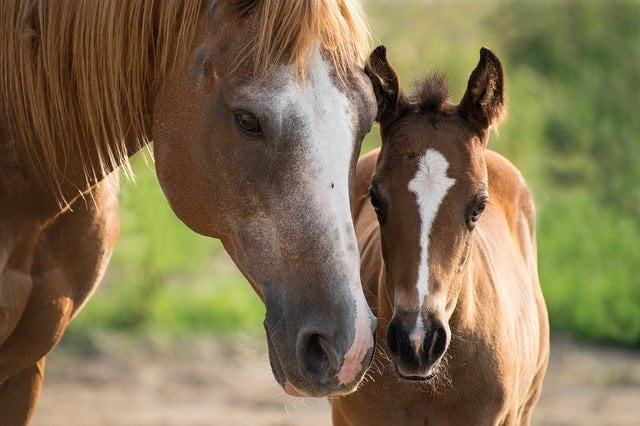Horses and ticks – what to do after being bitten

Horses and ticks – what to do after being bitten
Guest publication from the National Equine Tick Survey.
We have all gone through this; After spending time outside in the woods or tall grass, we find a small blood-sucking visitor with eight tiny legs and has a quick bite.
It’s a sign!
Tick-prevention news bulletins and public service announcements go viral, but focus mostly on humans and dogs, omitting our equine companions.
Personally, I didn’t think much about ticks on horses until recently, and all I really remember is that in my years as a horse owner, I’ve never found a horse on a horse.
However, the number of ticks is increasing, so we are seeing more ticks in more places than ever before.
These ticks can have a significant impact on the health of horses regardless of geographic location, and the lack of highly effective tick prevention products especially for horses makes them vulnerable.
Just like humans, horses can get infected with bacteria that cause diseases such as Lyme disease and anaplasmosis from tick bites.
Researchers at the Kansas State University College of Veterinary Medicine are pushing for a solution. The National Horse Tick Survey (NETS) is an initiative to collect data on ticks found on horses across the country.
Something is known about ticks in humans and small pets, but little is known about the spread, potential risks, or preventive measures against ticks in horses. The NETS team wants to change that.
With the help of our volunteer study team, we collect ticks from horses, identify them by species, and test them for the most common tick-borne diseases in horses.
Compared to the demographic data of affected horses, this data will create a knowledge database for future work.
So far, we have collected 1,110 ticks from 21 states, which highlights the problem of tick infestation in horses.
Are you interested in helping? If you find ticks on your horses, the NETS team wants them!
To submit a tag, safely remove it from the horse with tweezers, place in a sealable bag, and download the application form from. under the website .
(You can find more removal tips here )
The tick can be sent to us at the address below.
With each submission, we will email you with details of the ticks you have submitted, including brief information sheets on the specific species of ticks you have found on your horse.
It is submissions like this that drive this study forward!
As much as our focus is on horses and how to keep them healthy and comfortable, NETS’ vision extends far beyond that. The interdependence between human and animal health is important to us.
By studying horse ticks, we hope to reduce tick-borne diseases in horses, humans, dogs, cats, and your other pets so you can spend time with your furry friend.
While humans cannot catch tick-borne diseases directly from an infected animal, we know that many horse owners spend a lot of time with their animals, which means everyone is at risk of exposure. In other words, the same tick that bites your horses can also bite you!
Our team members are also interested in public relations and education. The NETS project is an example of Citizen Science – a research project’s reliance on data collected from the public. The information processed and published by the National Equine Tick Survey is collected by people for people.
By routinely checking your horse for ticks and sending off any ticks that are found, you are contributing to the scientific community and ensuring the future health of your animals and loved ones, which is ultimately what this initiative is all about.
National survey on horse ticks
202 Canter Hall
1800 Denison Street.
Manhattan, KS 66506
474-002
We happily accept ticks from all over the United States, especially western states, where we have fewer ticks.
So if you live on the West Coast or the Rockies, if you’ve ever seen a sign on your horses, please consider us.
Here are a few things to try to repel ticks as a natural tick repellent for horses .
We look forward to receiving an offer



